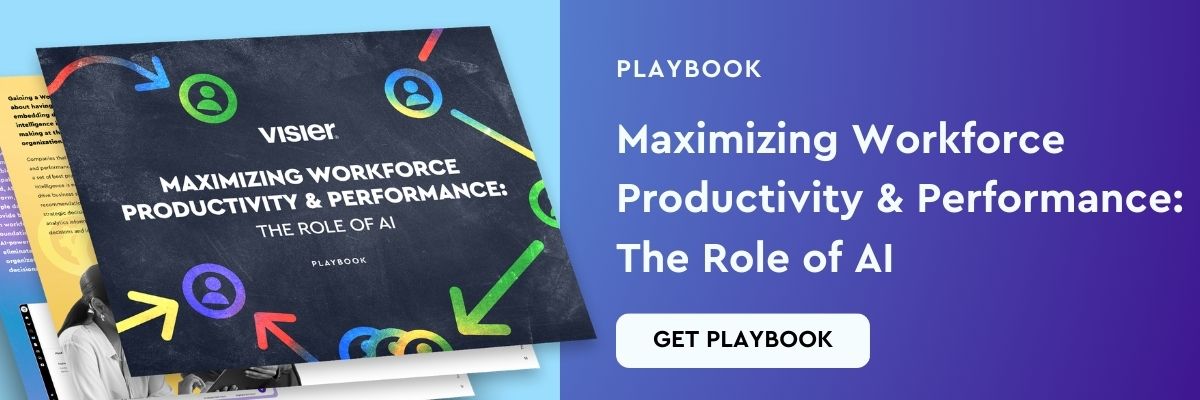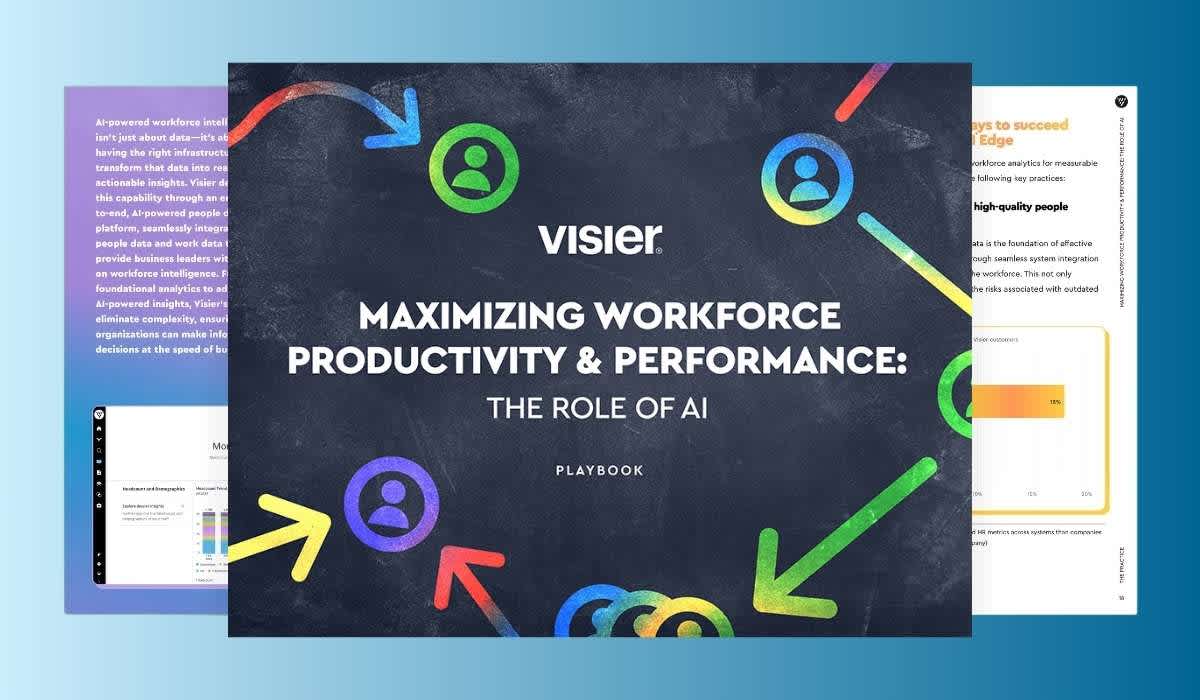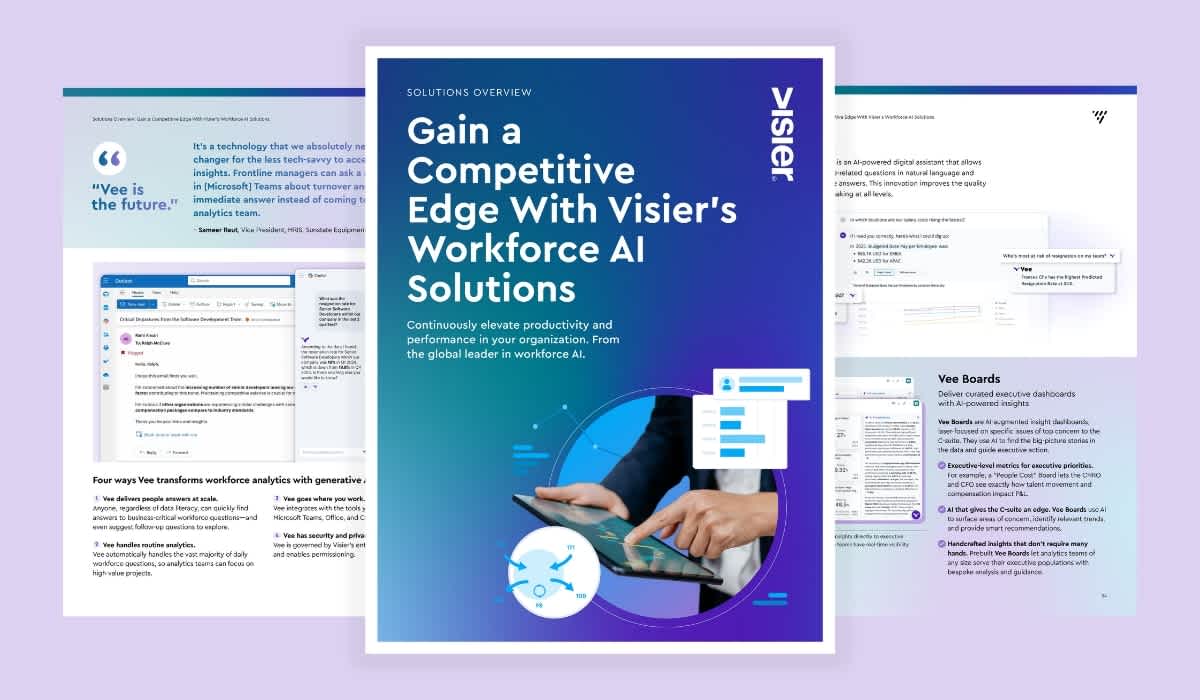How To Measure Employee Productivity
Knowing how to measure employee productivity is critical to ensuring optimal performance results. Learn how here.

Productive employees do their job effectively, reach their goals, and help the company grow. Employee productivity is critical to a business's success. When your employees don’t work as well as they used to, the entire organization suffers.
What is employee productivity?
Employee productivity is a measurement of the amount of goods or services that workers can produce—or the number of tasks they can complete — during a certain period, as well as the quality with which they can do it.
Measuring productivity requires you to look at both quantitative and qualitative aspects of work. That’s why a productive employee isn’t just the one who can do the most in the shortest time span. It is someone who delivers their work on time, meets or exceeds expectations, and prioritizes tasks correctly.

Why should you measure employee productivity?
A decrease in productivity is an issue that comes with ripple effects. Employees are not doing the same amount of work or they’re under-performing. This can also mean less engagement and less job satisfaction.
Plus, it can signal other issues like high levels of stress or burnout. Before you know it, your company will not meet its goals, the quality of your services will begin to suffer, and so will the entire business.
By measuring employee productivity, you can spot a negative trend before its effects impact every sector of the organization. Plus, measuring productivity comes with a range of other benefits.
These include:
Helping employees grow. Productivity checks, along with performance reviews, help make work more transparent. Employees understand the company’s expectations and know when they’re on the right track. Constructive feedback can also help them grow and improve in their work, so everyone wins.
Creating a culture of recognition. When you don’t recognize and don’t reward top performers, they can lose motivation and leave the company. Regular productivity checks allow you to see the employees who are performing their best. From there, you can create merit reward programs or think of other ways to recognize their efforts.
Identifying inefficiencies. Not every process or program you create will be effective or efficient. By checking productivity, you can identify ineffective processes and make better decisions.
Improving resource management. Knowing how and when employees are more productive helps to manage company resources better. You can allocate more resources to the areas that make the biggest impact, thus maximizing results.
How to measure employee productivity: tools, metrics, and tips
To measure employee productivity, you’ll need to look at both qualitative and quantitative data.
In short, you’re trying to get answers to two key questions:
How well your employees are working?
How much do they work over a predetermined period?
The ideal numbers and results will vary from company to company. There are also various tools you can use beyond metrics. Here’s a quick overview of everything you need to measure and boost employee productivity.

6 employee productivity metrics to track
Selecting the right metrics to measure will depend on a variety of factors, such as your industry or your business goals. Some of the most comprehensive ones include:
Task completion rate. This metric will show you the percentage of tasks that an employee finished over a period of time. The exact number will vary depending on the complexity of the projects.
Total cost of workforce (TCOW). People costs are often the highest for businesses. Tracking these numbers can show you what type of labor makes the most sense from an economic and productivity point of view. It measures the full costs of employing your workforce and includes people, overhead, and facilities costs.
Absenteeism rate. High absenteeism often means a decrease in productivity. It can also signal other issues within the company, including low engagement or even burnout.
Turnover and succession planning. Replacing one employee can cost you as much as twice that person’s annual salary. It can take time and may disrupt important business processes. Understanding turnover and succession planning metrics helps you identify development opportunities. It also allows you to find replacements for people in key positions so that productivity levels remain steady.
Time to productivity. This is a measure of how quickly new hires become productive employees. It helps assess the efficiency of your hiring and onboarding process and allows you to see the overall costs of filling a new position.
Learning metrics. 73% of employees would leave their current job for one that paid the same, but offered more learning and development opportunities. Plus, when people don’t keep their skills up-to-date, their productivity inevitably suffers. Find skill gaps and offer learning opportunities that align with business objectives and employee interests to boost productivity.
5 tools to help track employee productivity
You can track some productivity metrics manually. But most of the time, you’ll need to use various tools to help you make the process more efficient.
People analytics. While it is not a tool in the traditional sense of the word, people analytics helps you understand your workforce and make data-driven decisions. It gives you a unified view of your workforce data so you can understand what motivates employees and what helps them be more productive.
Asana. A classic project management tool, perfect for teams that want to collaborate on projects, track time spent on each task, and more. It gives you visibility into each project’s timeline and offers an easy way to view individual contributions.
JIRA. Similar to Asana, JIRA is perfect for team collaboration, tracking tasks, and project duration. It is more popular among software development teams and those that use Agile methodologies. You can also take the power of your data one step forward by adding Visier Analytics for JIRA. With it, you can visualize how each resource impacts the project’s success, how the team is working, and how much progress they’re making.
Toggl Track. If you want a straightforward way to track the time each person spends on a task, Toggl is a great tool to use. You can easily spot time-wasting activities, inefficiencies, and more.
Workforce Dynamics. A key requirement for high employee productivity? A thriving workplace with good collaboration, skill sharing, and high engagement. Workforce Dynamics shows you a 360-degree view of employee collaboration and team dynamics. With it, you can help each person grow, harness the power of collaboration, and enhance productivity.

7 tips for boosting employee productivity
Employee productivity means reaching your goals faster. It also helps manage resources, customer service, and company processes. The right tools and metrics can help you understand how productive your employees are and what drives them. But how do you boost employee productivity? Here are a few easy tips.
Set clear expectations. People work better when they know what they’re working towards. Establish your goals right from the start and help employees understand what is expected of them.
Provide training. Even if those you hire have years of experience in the field, they haven’t worked with you or your systems. Provide comprehensive training and invest in your employees’ development. This will boost their motivation, engagement, performance, and productivity.
Offer flexibility. Flexible work arrangements, like working remotely or flexible hours, can boost productivity. Adapt according to your sector, but make sure there’s enough room for work-life balance for every employee.
Create a merit reward program. Recognizing your top performers is key to an engaged, productive workforce. Create a program that allows you to reward these employees. You can include bonuses, merit increases, and more. Don’t forget transparency, though! Make expectations and feedback clear, so that everyone can know how they can get a merit increase.
Encourage skill sharing. Create an environment where employees can share their knowledge with each other. This enables collaboration, innovation, and cross-functional learning. It can also be the first step towards a mentorship program and succession planning.
Provide constructive feedback. There are many ways to tackle performance reviews. The most important part, though, is to make your feedback constructive. There is no point in criticizing for critique’s sake. Help employees understand what they did well, where they made mistakes, and how they can improve.
Lead by example. Teams with leaders that are unproductive are more likely to have poor results. Lead by example, get involved in projects, and guide your team to success. This increases productivity, but also motivation, and engagement, and lowers turnover.
The bottom line
Increasing employee productivity means boosting motivation, creating a supportive environment, and prioritizing employee well-being. Measuring it requires looking at several metrics and dimensions.
You’ll need to understand how your employees are working and how many tasks they’re completing. But you’ll also need to look at how well you’re managing things like internal movement, succession, and learning.
Regardless of the metrics you use, tracking employee productivity will help you create a strong workforce that reaches its goals every time.
Read more about workforce productivity
Talent density boosts productivity, innovation, and growth. Learn strategies for building, balancing, and measuring talent density in your workforce.
Visier’s Agentic AI Platform introduces powerful AI agents that analyze, learn, and adapt to deliver actionable workforce insights in a new era of productivity.
Companies spend a lot of time and resources on onboarding. But no matter what skills new employees come with, everyone has to ramp up to full productivity. Learn how to determine the average time to productivity and why it's important.



